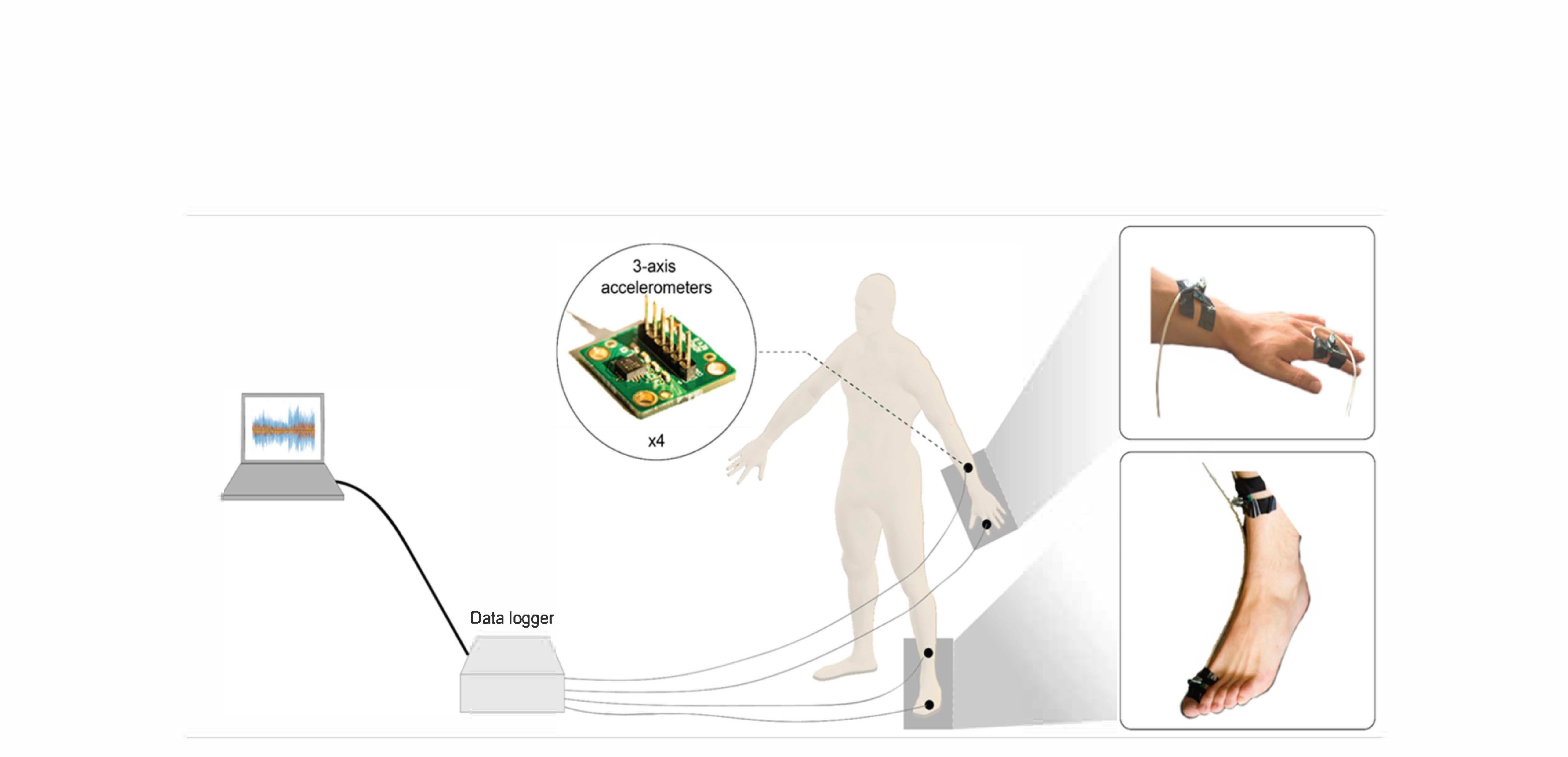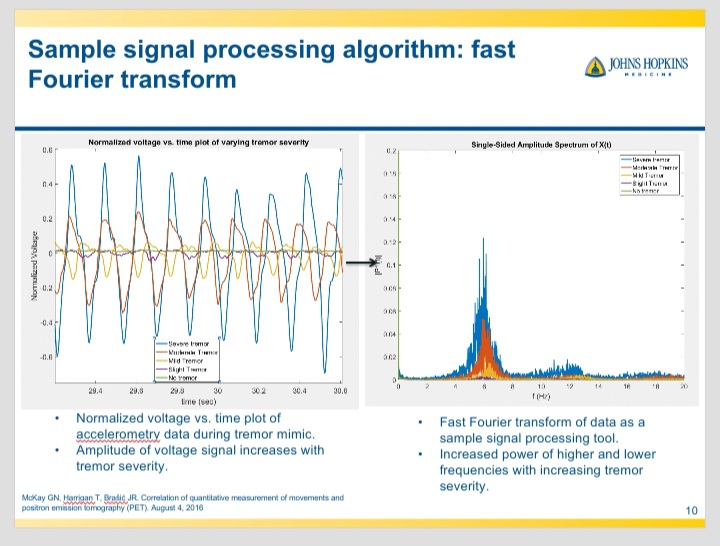Category: Parkinson's Disease: Neurophysiology
Objective: To develop a machine learning program to detect and classify tremors in patients with Parkinson’s disease (PD) and related conditions.
Background: PD is the most common movement disorder and the second most common neurodegenerative disorder after Alzheimer’s disease. It results from degeneration of the dopaminergic neurons in the substania nigra in midbrain which is part of the basal ganglia. The majority of patients are due to unknown etiology while some cases are hereditary or due to exposure to certain toxins. The main symptoms of PD are bradykinesia, tremors and rigidity. The diagnosis of PD depends mainly on clinical assessment using the Movement Disorder Society-sponsored revision of the Unified Parkinson Disease Rating Scale (MDS-UPDRS) (Goetz, et al., 2008). In this study, we sought to developed a machine learning program to detect and classify tremors in patients with PD.
Method: We developed a tri-axial mechanical accelerometers to objectively detect tremors in PD and related movement disorders alongside with clinical assessment using a low-cost quantitative continuous measurement of movements in the extremities of people with PD (McKay, et al., 2019), a modification of the MDS-UPDRS the (Goetz, et al., 2008). The protocol was administered by trained raters certified in the MDS-UPDRS to 20 participants with PD to eight age- and sex-matched healthy controls. (Harrigan, et al., 2020). Ten-second segments of accelerometer signals of the repetitive tasks (finger tapping, hand movements, pronation-supination of the hands, toe tapping, and leg agility) and their fast Fourier (FFT) and continuous wavelet transforms (CWT) were classified into two classes : low (corresponding to ratings 0-1) and high (corresponding to ratings 3-4). An equal number of images were selected randomly from each class and used for classification. The network’s ability to correctly classify validation images determined its accuracy score.
Results: The network had a 92% accuracy in predicting new CWT images and a 97% accuracy in predicting new STFT images into low (0-1) and high (3-4) classes.
Conclusion: The utilization of machine learning to categorize output of instrumentation for movements is a feasible technique to classify repetitive movements of people with PD and healthy controls (Suresh, et al., 2020)s. We aim to repeat the experiment on 100 patients matched with 100 healthy controls.
To cite this abstract in AMA style:
T. Elshourbagy, M. Hernandez, G. Mckay, J. Brasic. Artificial Intelligence to detect and classify tremors in patients with Parkinson’s disease and related conditions [abstract]. Mov Disord. 2023; 38 (suppl 1). https://www.mdsabstracts.org/abstract/artificial-intelligence-to-detect-and-classify-tremors-in-patients-with-parkinsons-disease-and-related-conditions/. Accessed December 18, 2025.« Back to 2023 International Congress
MDS Abstracts - https://www.mdsabstracts.org/abstract/artificial-intelligence-to-detect-and-classify-tremors-in-patients-with-parkinsons-disease-and-related-conditions/


